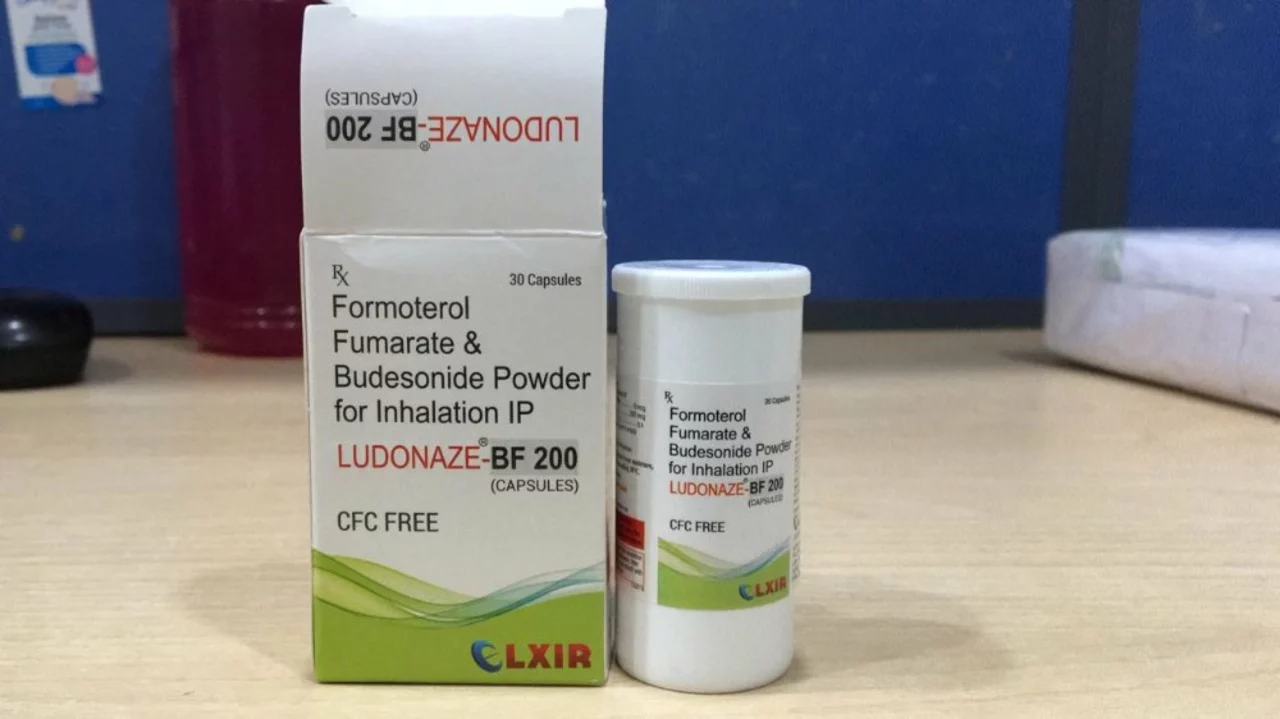Budesonide Formoterol: what it is and why people use it
Budesonide‑formoterol combines an inhaled steroid (budesonide) with a fast‑acting long‑acting bronchodilator (formoterol). Together they reduce airway inflammation and open airways quickly. Doctors commonly prescribe this combo for asthma control and for some people with COPD to reduce flare‑ups.
How it works and when it's used
Budesonide lowers inflammation in the lungs so symptoms like wheeze and coughing go down over time. Formoterol relaxes airway muscles fast, usually within minutes, so breathing gets easier right away. Many people use this inhaler as a regular maintenance treatment to prevent symptoms; in some treatment plans it also doubles as a quick reliever when symptoms start (a single‑inhaler maintenance and reliever approach). Your doctor will tell you which plan fits you.
How to use it properly
Use the inhaler exactly as your clinician instructs. Shake a pressurized inhaler if required, or load a dose on a dry‑powder device per the leaflet. Breathe out fully, place the mouthpiece in your mouth, inhale deeply while pressing the canister (or inhaling the powder), then hold your breath for 5–10 seconds. Rinse your mouth with water and spit after using the steroid inhaler to cut the risk of thrush. Keep a spacer if your provider recommends one — it makes delivery easier for many people.
Follow the prescribed dose. Don’t double up or change the routine without asking your prescriber. If your plan includes using the same inhaler as relief, keep track of doses so you don’t run out unexpectedly.
Side effects and warnings
Common side effects are throat irritation, hoarseness, oral thrush, mild tremor, and a fast heartbeat. Most are mild and often improve with correct inhaler technique and mouth rinsing. Serious problems are rare but get urgent help for severe breathing trouble, chest pain, fainting, or allergic reactions.
Avoid combining this inhaler with non‑selective beta blockers (they can blunt formoterol’s effect). Tell your doctor about heart disease, high blood pressure, diabetes, thyroid issues, or if you’re pregnant or breastfeeding. Never stop abruptly if you’ve been on high‑dose steroids — your clinician will guide tapering when needed.
Store the inhaler at room temperature away from direct heat. Check the dose counter or expiry date so you always have a working inhaler. If symptoms worsen or you need more reliever doses than usual, contact your healthcare provider — that can mean your asthma or COPD needs a treatment change.
If you have questions about switching devices, dosing, or side effects, ask your pharmacist or prescriber. Proper technique, steady use, and clear action plans make budesonide‑formoterol work well for most people who need it.

How to incorporate budesonide formoterol into your daily routine
Incorporating budesonide formoterol into my daily routine has been a game changer for managing my asthma symptoms. First, I make sure to take it at the same time every day to maintain consistency in my treatment. I also keep it easily accessible, so I don't forget or lose track of it. Additionally, I ensure my inhaler technique is correct for optimal delivery of the medication. Lastly, I track any side effects or changes in my symptoms to discuss with my doctor during check-ups.
Read More